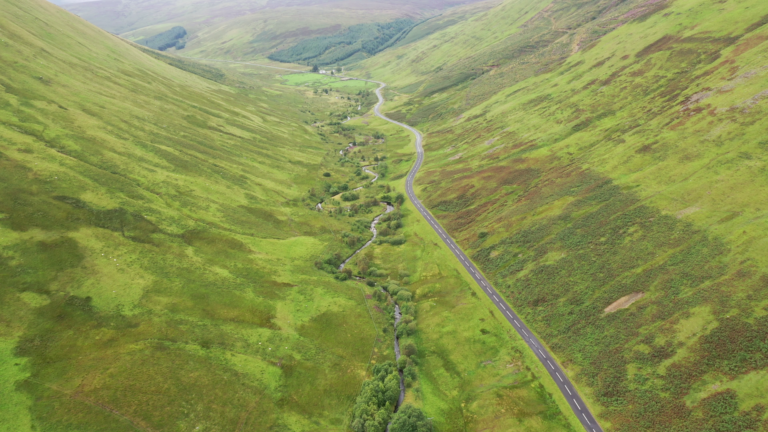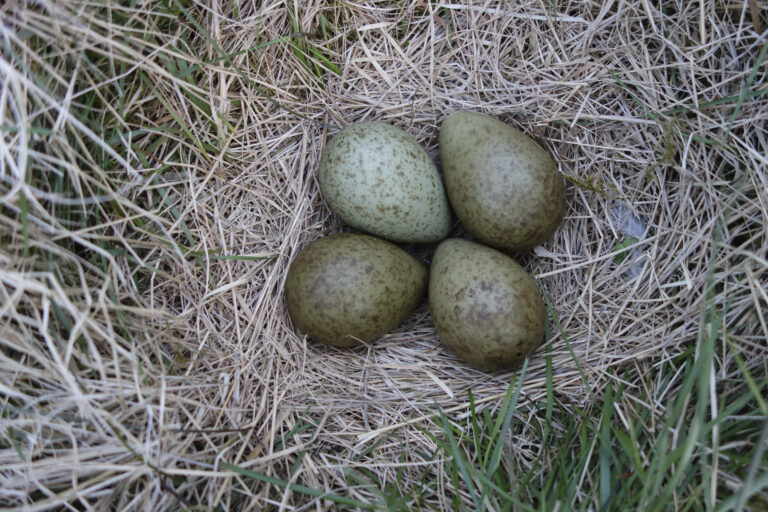Euan Ross, Scotland manager for the Nature Friendly Farming Network, considers whether the Scottish Government’s draft Agriculture and Rural Communities Bill goes far enough in changing how farmers and crofters will receive support in Scotland.
What is the Agriculture Bill?
In 2020, Scotland passed a bill granting ministers the power to ensure the EU’s Common Agricultural Policy (CAP) continued, whilst giving the ability to make some simplifications and improvements to the scheme following Brexit.
The Scottish Government then published a Vision for Agriculture in 2022 declaring it will become a global leader in sustainable and regenerative agriculture. This vision is committed to a support framework from 2025 onwards that delivers high-quality food production, climate mitigation and adaptation, nature restoration and rural development.
In trying to realise this vision, the Scottish government has introduced the Agriculture and Rural Communities (Scotland) Bill to parliament. This bill is a necessary piece of framework legislation, providing Scottish ministers further control and flexibility to amend the current Common Agriculture Policy.
The policy memorandum notes that the bill is an attempt to move away from the EU’s CAP, whilst staying aligned with the EU on outcomes. As such, this bill is a legislative necessity.
However, the bill is also intended to meet many other desirable outcomes including the transition to net zero farming, mitigating the nature crisis, allowing rural communities to thrive and protecting the rural economy.
These outcomes sound strongly aligned with nature-friendly farming, but does the proposed support mechanism facilitate it?
What is the four-tiered system?
This bill provides some positive signals for the future direction of agriculture. The bill contains four overarching objectives for policy including the adoption and use of sustainable and regenerative agriculture practices, the production of high-quality food, the facilitation of on-farm nature restoration, climate mitigation and adaptation as well as enabling rural communities to thrive.
A new tiered payment system will be used to try and achieve this.
The four-tiered system explained:
- Tier 1 (base) and tier 2 (enhanced) will be a form of direct payment:
- Tier 1 (base) will be for minimum levels of agricultural activity and minimum standards of environmental stewardship
- Tier 2 (enhanced) will be used to incentivise farmers to go beyond the base level of environmental performance, focusing on reducing greenhouse gas emissions, adapting to climate change as well as protecting, restoring and improving nature
- Tier 3 (elective) and tier 4 (complementary) will be indirect payments:
- Tier 3 (elective) will be for a range of payments for specific nature or climate improvement undertakings.
- Tier 4 (complementary) will be delivering access to support and advice as well as continuous professional development. It will also seek to connect farmers and crofters with support for woodland management, tree planting as well as peatland restoration and management.
Alongside this new support mechanism, Scottish ministers will be required to lay before parliament and publish a rural support plan which covers up to a five-year period detailing strategic priorities for providing support.
This shows promising signs, but is it as good as it sounds?
Is the 4-tiered system enough?
As with all legislation, the devil is more often than not hidden in the details. Whilst the Nature Friendly Farming Network supports the move towards a four-tiered payment system, the allocation of funding is inadequate to support farmers and crofters in meeting the goals that the bill sets out. The financial memorandum indicates that the proportion of funding towards direct payments will be kept in line with previous legislation, so the vast majority of funding will be going towards tier 1 and tier 2.
This means that most of the funding will go towards ineffective and inequitable area-based subsidies. As the base tier only requires meeting minimum environmental standards it will be inadequate at encouraging much-needed large-scale shifts to sustainable and regenerative agriculture. Additionally, these area-based payments mean that the largest landowners will be the ones who receive the greatest amounts of funding. It also means that tier 3 is seen as a ‘competitive’ tier due to budget constraints and tier 4 will largely be made up of pre-existing schemes.
“We’re not getting anywhere near the change needed to put the sector on a resilient path. Scotland’s approach to funding seeks to provide stability for a sector which is facing many challenges – but the reality might prove the opposite.”
The NFFN suggests that powers to cap and/or taper base-level payments should begin almost immediately to create more fairness in the system. The funding freed up from this should be redirected to supporting actions that help drive the transition to nature-friendly farming.
Whilst some base-level payments may be necessary for the initial transition, the NFFN recommends that over the next parliament (2026-30) the tier 1 base-level direct payments are moved into tiers 2, 3 and 4. This will provide farmers and crofters with much better, and fairer, means of achieving regenerative agriculture.
To support this direction of travel, NFFN Scotland wants to see a clear and timebound transition period. This will provide farmers and crofters with the reassurance they need, as well as the time to prepare their businesses to transition. To aid with this, NFFN Scotland is calling for a £200m ten-year co-designed, industry partner-led programme of regenerative and agroecological learning, research and development and regional-based peer-to-peer farmer and crofter-led knowledge exchange supported across Scotland (£20 million per annum). These regional farmer and crofter-led cluster groups will be fundamental to the success of the objectives within the vision for agriculture. Projects, such as this, should be a priority, and why increased budget for tier 4 is required.
To ensure the bill’s core focus is in keeping with this, NFFN Scotland is calling for a strong and well-defined purpose clause for the bill committing to such a transformative change in farming, food production and land management. Regular programming periods, a strategic plan for farming and crofting, and ambitious targets should also be used so that farmers have the confidence to reduce input dependency and put the sector on a more profitable path.
Why does this matter for farmers and crofters?
This piece of legislation and future secondary legislation is of key concern to farmers as it determines what form of farming activities will be paid for, and at what rates, in the future. Farmers and crofters are facing increasing pressure to meet a multitude of objectives. As such, they need the support to achieve this. Whilst upfront finance is crucial, the Government should also upscale advisory and educational services to secure a successful transition.
Leaving farmers with an inadequate support system in the transition to nature-friendly farming may mean more are increasingly vulnerable to economic or market shocks, or facing increasing pressure from the press and the public. Most importantly, ensuring farmers are climate resilient is critical to the viability of their own businesses. This has been seen recently in how storm Babet caused serious damage to Scottish farms.
The NFFN strongly believes that farmers and crofters are capable of making rural areas climate-resilient, environmentally regenerative and financially profitable if support is allocated in a way that provides them with the means to deliver it.
“The health of our natural environment is a by-product of how we produce food. In tandem, the state of our farm landscapes dedicates the viability of our food production. We need effective Government support to shift the industry towards farm practices that restore the balance of on-farm ecosystems.”
Why does this matter to the public?
Over £3 billion of taxpayer’s money is set to be spent on agriculture and rural development over the next five years, giving taxpayers the right to choose what food and farming systems their money supports.
We must maintain high-quality food production, but not to the detriment of people’s lived environments. The recent State of Nature Scotland report highlighted the devastating decline of Scotland’s nature. One in nine Scottish species are now threatened with extinction: 15% of all Scottish wildlife has decreased since 1994 and, since 1970, Scotland’s distribution of flowering plants has decreased by 47%.
These statistics are just the tip of the iceberg. But, encouragingly, both the Scottish and UK-wide reports highlight that the future state of nature depends on industries, such as farming, fishing and forestry, adopting nature-friendly approaches.
The health of our natural environment is a by-product of how we produce food, and in tandem, the state of our farm landscapes dedicates the viability of our food production. We need effective Government support to shift the industry towards farm practices that restore the balance of on-farm ecosystems.
The welcomed move towards public money for public goods across the UK not only serves food production; it can deliver nature restoration, flood resilience and climate mitigation, amongst other outcomes. But delivering these public benefits won’t happen without a well-designed payment and support system.
Everyone has a stake in seeing these outcomes realised and now the Scottish Government must live up to its aspirations to become a global leader in regenerative agriculture.
If you would like to learn more about the Agriculture Bill, you can find all relevant information here. The explanatory notes offer a useful entry point for understanding more.
This blog was first published on the Nature Friendly Farming Network’s website.
Disclaimer: The opinions expressed in this blog are the author’s and do not necessarily represent the views of all the organisations backing the Farm for Scotland’s Future campaign.




